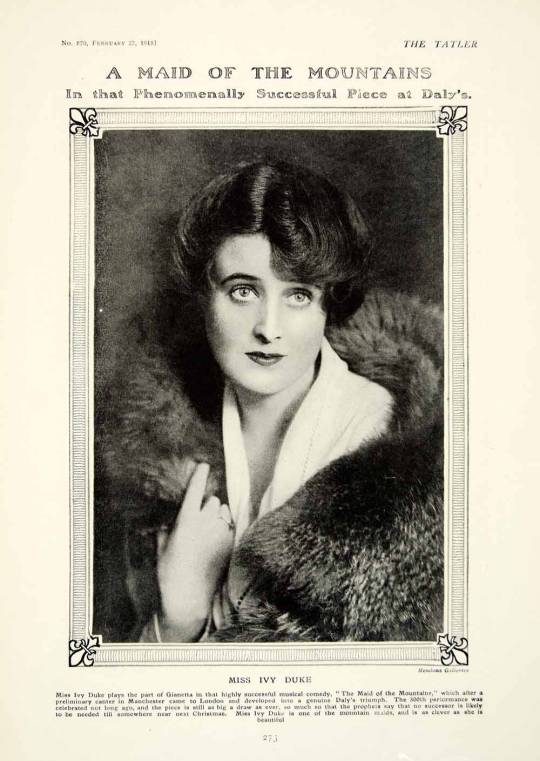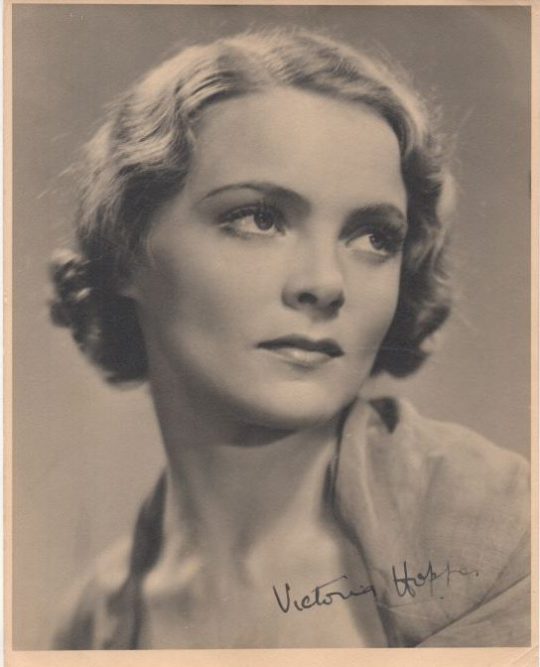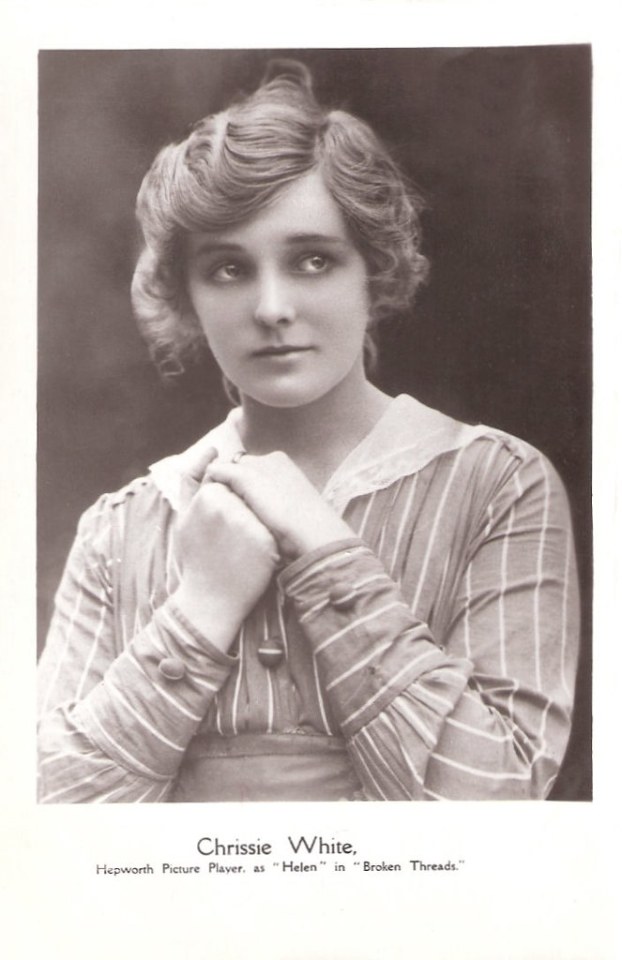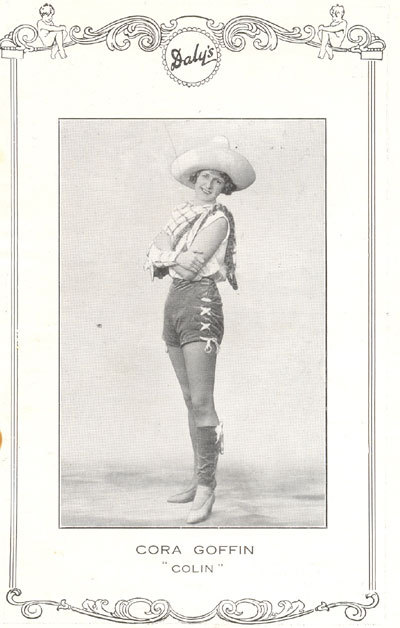#200 films of 1952 film 180
Explore tagged Tumblr posts
Text

200 Films of 1952
Only 20 films to go now!
Film number 180: Meet Danny Wilson
Release date: April 1st, 1952
Studio: Universal
Genre: musical
Director: Joseph Pevney
Producer: Leonard Goldstein
Actors: Frank Sinatra, Shelley Winters, Alex Nicol
Plot Summary: Small time crooner Danny Wilson makes a deal with a gangster to fast-track his career. He becomes a huge success overnight, but things get complicated when Danny and his obsessively loyal friend Mike both fall for the same girl... and she has her own ties to the gangster.
My Rating (out of five stars): ***
I was really curious to see this one, because it's notoriously hard to find, and there are legendary stories about how much Sinatra and Winters hated each other. Like screaming matches and throwing things kind of hate! The film turned out to be interesting in a few ways, even if it is far from great. It’s a musical with an unusually dark side and a love triangle that ends in an unexpected way. Amazingly, the spite the two leads felt for each other didn’t translate to the screen. (Spoilers!)
The Good:
Frank Sinatra. Of course his singing was lovely, but his acting really stood out as well. It’s not surprising that his Oscar winning turn in From Here to Eternity was only a year away. I especially liked his lighter moments in the film, he had a very natural almost boyish playfulness that I found charming.
The music! There was a lot of music in this, but it wasn’t only quantity- the quality of the material and the performances were top notch. It was basically a greatest hits selection.
Shelley Winters. I enjoyed seeing a lighter side of her as well. Although her role required more serious drama as the film went on, I liked seeing her play something that wasn’t a tragedy. Her smiling jovial side was pretty irresistible.
This musical had a darker edge that was nothing like the MGM musicals Sinatra starred in previously. It didn’t always work, but I appreciated that the attempt was made.
The love triangle played out differently than I expected, which impressed me.
The cameo of Tony Curtis and Jeff Chandler in a nightclub scene was fun. Even if he is on screen for three seconds, Chandler still makes me swoon a little!
I loved that the penultimate scene was actually filmed on location at Wrigley Field.
The Bad:
Seeing a 37-year-old unhealthily thin-looking Sinatra being portrayed as a hot new teen idol felt kind of ridiculous to me. Yes, he certainly was back in the 30s and 40s, but it felt like a stretch for 1952.
I adore Raymond Burr, but he didn’t work as a threatening gangster for me. There was nothing wrong with his performance per se, he’s a great actor. He just didn’t seem intimidating enough.
The character Mike was kind of blah and milquetoast. The actor who played him, Alex Nicol, was appealing, and I understand why Joy fell for him, but the script gave him little to work with.
The visual look of the film overall was kind of non-descript and pedestrian. The “growing success” montages were laughable trope-fests! The musical performances were also not very creatively staged or shot. The only one that stands out in my memory is the duet between Sinatra and Winters.
Sometimes things felt a bit disjointed in tone- there was just an element of something not clicking overall.
The plot was also pretty implausible on multiple fronts. One example? When you kill the head gangster of a local mob, your problem’s solved for life, right? Nobody else will ever come after you... right?
The fact that Mike got shot in the back from only a few feet away and managed to survive was a most miraculous, preposterous recovery.
#1952 movies#100 films of 1952#200 films of 1952#frank sinatra#shelley winters#200 films of 1952 film 180
1 note
·
View note
Photo






Sons Of The Silent Age. Part One.
1) Ivy Duke (1896-1937) starred in the 1920 hit film The Lure of Crooning Water. She drank herself to death after her career took a downward turn.
2) Sybil Rhoda (1902-2005) starred in Alfred Hitchcock’s Downhill opposite Ivor Novello. Interviewed at age 101, she said "I'm amazed I've existed so long. I'm surprised about the whole thing. I can't get over it,"
3) Maurice Elvey (1887-1967) was one of the most prolific film directors in history, making nearly 200 films between 1913 and 1957. During the silent film era, he directed as many as 20 films per year. His adaptations of Sherlock Holmes were praised by Arthur Conan Doyle. In order to film the sinking of a troop ship, Elvey built a water tank in his own back garden, spending two months to fill it up via his kitchen tap.
4) Victoria Hopper (1909–2007) was a British actress popular during the 1930s. From 1934 until 1939, she was married to film director Basil Dean, who grew interested in Hooper due to her resemblance to his former lover Meggie Albanesi (1899-1923). Dean cast her in several major films, which did badly at the box office.
5) Chrissie White (1895-1989) appeared in more than 180 films. White married director Henry Edwards, and they became one of the most newsworthy celebrity couples of the 1920s. They had two children, and remained together until his death in 1952.
6) Cora Goffin (1902-2004) was an actress on the London stage. She acted in two silent films, during which she leapt from a moving horse and threw herself beneath a moving car in Paris. There were reports that she had her legs insured for £20,000 with Lloyd's of London. Goffin married theatre manager Emile Littler in 1933. She became Lady Littler when Emile was knighted in 1974
#shepperton babylon#sepia#1920s#1930s#cora goffin#chrissie white#victoria hopper#maurice elvey#sybil rhoda#ivy duke#vintage photography#matthew sweet#sherlock holmes#arthur conan doyle#alfred hitchcock#the lure of crooning water#old britain#ivor novello#david bowie#henry edwards
15 notes
·
View notes
Text
The Adversary in the Mirror
There is a familiar quality of the final leg of the journey to passing our certification tests that all professional court reporters remember. It’s that feeling that somehow it’s harder here in the exit speeds - 180, 200, 225 - than it was before, even though I can write faster. This sense is a combination of a number of factors but for me, personally, it was the conglomeration of a lack of discipline in my practice, fear of success, and self-doubt.
The lack of discipline was the easiest to diagnose and treat. I wanted to do this for a living, that I knew, but my actions said otherwise. I was spending more time talking about doing it, reading about other things, and binge watching my favorite shows than I was on my machine practicing. The transformative solution came when I was challenged to practice for 100 days in a row by Rich Germosen, a perennial top finisher in the speed and realtime contests. The cumulative effect of even 15 minutes a day of practice on my “days off” elevated my focus and kept my speed from evaporating on the weekends.
Fear of success was a more nebulous foe. I was so close to becoming a working reporter but could I really handle the responsibility of it all? I’d have to be ready to read back expert testimony at blistering speeds, keep track of exhibits, certify transcripts, master the bells and whistles of my CAT software, and interrupt attorneys in the heat of verbal fisticuffs. It seemed like so much, and in my heart of hearts I wasn’t sure I was ready to do all that. The good news is I didn’t have to be a master of it all on day one.
There is no way to pick up everything we eventually need to know as court reporters in school, and that’s why I’m grateful to have seasoned mentors and work for a company that put me in situations I could handle early on. They helped guide me through the bumps in the road that arose. I highly recommend you connect with a mentor in your area as soon as possible. If your school is unable to help you in this regard, reach out to your state association.
And the final beast I had to conquer was the mightiest of them all: Self-doubt. “The subconscious area is that part which lies below the level of consciousness or memory. It is the great storehouse or reservoir of all our past thoughts, attitudes, and desires. Into its millions of pigeonholes go the things we read, hear, observe; the pictures we see, the impressions we receive, the thoughts we entertain as we go about our daily life.” (The Knack of Using Your Subconscious Mind, Williams, John K., 1952; p. 30)
The subconscious is also the repository of our automatic responses. It is the database into which we’re entering information constantly. If, at the core of our being, we believe something like, “I can’t really do this,” that belief is the overarching instruction that governs our subconscious mind in areas related to writing on the machine. It is why we lose focus in the middle of a test or start thinking about how we’re actually getting all the words and then fifteen go by while we’re doing a mental victory lap, and we go to pieces.
But there’s good news in this area as well. “If you are consciously aware of the beliefs held by your subconscious and the motivations that keep them operative, then you can use logic and alternative motivational strategies to make changes.” (Mastering Your Hidden Self, King, Serge, 1985; p. 56) Fortunately you and I know exactly who made our subconscious minds the way they are: We did.
We created the operational principle of self-doubt; we can replace it with self-belief. I will offer here two strategies to do this but there are more. The first one, the mantra, I picked up from Lisa Knight, an accomplished realtime writer and trainer. Your court reporting mantra henceforth is “I’m there.” Say it out loud and say it mentally, to yourself, over and over throughout the day.
This is akin to upgrading your computer’s operating system. You are overwriting the faulty circuitry that extends from the thought, “I can’t,” and erasing the perceived separation between your skill set and that required to pass the test. *THIS IS NOT A SUBSTITUTE FOR PRACTICE* It is a tool to enhance performance when you test.
The other tool is to update the language you use. I learned this from Mark Kislingbury, the fastest stenographer on Earth. He told me to start calling myself a court reporter well before I passed my certification tests. Delete the phrase “When I become a court reporter…” from your vocabulary. You are one now. You are a court reporter who simply has yet to experience a certain level of performance on a standardized five minute set of words.
In 2015’s Creed, Rocky Balboa has the star of the film gaze into the mirror and then he says, “That's the toughest opponent you're ever going to have to face.” The same is true for stenographers as we approach the summit of our journey through school and start eyeing the rich landscape of the career that awaits us on the other side.
And when you’ve done this work and arrived at that final gate on test day and encounter an adversary whose face is your very own, your hands and mind will be in sync with your purpose, and you’ll cross the threshold and embark upon the career of a lifetime.
6 notes
·
View notes
Text
2017 Movie Odyssey
So ends the 2017 Movie Odyssey. Last year, I wrote that I did not foresee ever surpassing the 200+ movie mark for a long, long time. But look what happened here (outside of May because that was a hectic time in the Master’s program for sure). The 2017 Movie Odyssey consisted of 232 films - 180 feature-length films and fifty-two shorts. A century of filmmaking was covered this year, from 1917 to 2017. If I do have one regret this year... it’s that African films were not featured this year (due to availability issues and me not having enough money; I tend to watch things legally if possible). I hope to assuage that next year for a more representative Movie Odyssey.
For all of you out there who supported the Movie Odyssey in your own ways – whether reading, liking, commenting, or reblogging a write-up or sitting down with me to a new movie or talking to me about any movie... my thanks to all of you. None of this possible without you, and I hope you find that, through this blog, classic movies seem more approachable and welcoming and you are inspired to see some and learn about them yourself. A Happy New Year to all, and I’ll see you for the 2018 leg of the Movie Odyssey very soon (oh boy the Winter Olympics and World Cup are gonna chip away at the final count next year)!
As many know, all ratings are based on my imdb rating and half-points are always rounded down. My interpretation of that ratings system can be found here. A 6/10 is considered the borderline between “passing” and “failing”. Feature-length narrative films, short films, and documentaries are rated within their respective spectrums.
JANUARY
1. Marnie (1964) – 6/10 2. The Moon Is Down (1943) – 7/10 3. Sense and Sensibility (1995) – 8.5/10 4. The Big House (1930) – 7.5/10 5. Manchester by the Sea (2016) – 7/10 6. The Far Country (1954) – 7/10 7. Kung Fu Hustle (2004, Hong Kong/China) – 7/10 8. Road to Singapore (1940) – 6/10 9. A Clever Dummy (1917 short) – 5/10 10. Hidden Figures (2016) – 7.5/10 11. Teddy at the Throttle (1917 short) – 7.5/10 12. The Last of the Mohicans (1920) – 7/10 13. Sweet Smell of Success (1957) – 10/10 14. The Red Turtle (2016, France/Belgium/Japan) – 9/10 15. Life, Animated (2016) – 7.5/10 16. In the Mood for Love (2000, Hong Kong) – 10/10
FEBRUARY
17. Lion (2016) – 7/10 18. It’s Always Fair Weather (1955) – 7.5/10 19. Fences (2016) – 8.5/10 20. Shenandoah (1965) – 7/10 21. Caged (1950) – 8/10 22. Pearl (2016 short) – 7.5/10 23. Blind Vaysha (2016 short) – 8/10 24. Asteria (2016 short) – 6/10 25. The Head Vanishes (2016 short) – 6/10 26. Once Upon a Line (2016 short) – 7/10 27. Pear Cider and Cigarettes (2016 short) – 8/10 28. Sing (2016 short, Hungary) – 7.5/10 29. Silent Nights (2016 short, Denmark) – 6/10 30. Timecode (2016 short, Spain) – 7/10 31. Ennemis intérieurs (2016 short, France) – 8.5/10 32. La femme et le TGV (2016 short, Switzerland) – 8/10 33. Joe’s Violin (2016 short) – 7/10 34. Extremis (2016 short) – 8/10 35. 4.1 Miles (2016 short, Greece) – 9/10 36. Nashville (1975) – 7.5/10 37. The Romance of Transportation in Canada (1952 short) – 7/10
MARCH
38. My Life as a Zucchini (2016, Switzerland) – 8/10 39. Lili (1953) – 7/10 40. The Man from U.N.C.L.E. (2015) – 6/10 41. Captain Blood (1935) – 9.5/10 42. Logan (2017) – 7/10 43. Friendly Persuasion (1956) – 9/10 44. Ducks and Drakes (1921) – 7/10 45. What Dreams May Come (1998) – 6/10 46. Bright Road (1953) – 6/10 47. Snow Gets in Your Eyes (1938 short) – 5/10 48. Jungle Cat (1959) – 6.5/10 49. The Salesman (2016, Iran) – 8.5/10 50. Good Scouts (1938 short) – 7.5/10 51. All in a Nutshell (1949 short) – 8/10 52. The Hound That Thought He Was a Raccoon (1960) – 7/10 53. Winter Storage (1949 short) – 7/10 54. Out of Scale (1951 short) – 8/10 55. The Incredible Journey (1963) – 7/10 56. Follow Me, Boys! (1966) – 7/10 57. Charlie, the Lonesome Cougar (1967) – 5.5/10 58. Belladonna of Sadness (1973, Japan) – 6/10 59. Ponyo (2008, Japan) – 7/10 60. My Cousin Rachel (1952) – 7.5/10 61. Road to Perdition (2002) – 9/10
APRIL
62. The X from Outer Space (1967, Japan) – 3/10 63. The Blue Gardenia (1953) – 6.5/10 64. Get Out (2017) – 7.5/10 65. Fantastic Planet (1973, France/Czechoslovakia) – 8/10 66. 5 Centimeters Per Second (2007, Japan) – 6/10 67. Your Name (2016, Japan) – 7.5/10 68. The Outlaw and His Wife (1918, Sweden) – 7/10 69. Mail Early (1941 short) – experimental film, score withheld 70. Boogie-Doodle (1948 short) – experimental film, score withheld 71. A Chairy Tale (1957 short) – 9/10 72. Very Nice, Very Nice (1961 short) – experimental film, score withheld 73. Fine Feathers (1968) – 7/10 74. What on Earth! (1967 short) – 8/10 75. Walking (1968 short) – 7/10 76. Notes on a Triangle (1966 short) – experimental film, score withheld 77. The Three Faces of Eve (1957) – 7.5/10 78. Peeping Tom (1960) – 7.5/10 79. Porco Rosso (1992, Japan) – 8/10 80. MacArthur (1977) – 6/10
MAY
81. Dr. Goldfoot and the Bikini Machine (1965) – 4/10 82. Scarlet Street (1945) – 8.5/10 83. Tremors (1990) – 7/10 84. The Crucified Lovers (1954, Japan) – 7.5/10 85. Akeelah and the Bee (2006) – 8/10
JUNE
86. Wonder Woman (2017) – 7/10 87. Pollyanna (1960) – 7.5/10 88. Mickey’s Polo Team (1936 short) – 8/10 89. Tales of Manhattan (1942) – 7/10 90. The Horse with the Flying Tale (1960) – 7/10 91. Sound of the Mountain (1954, Japan) – 9/10 92. Return of the Fly (1959) – 4/10 93. Friday the 13th (1980) – 4/10 94. The Tattooed Police Horse (1964) – 6/10 95. Dr. Jack (1922) – 7/10 96. Pat Garrett and Billy the Kid (1973) – 7/10 97. Friday the 13th Part 2 (1981) – 5/10 98. The Great Man (1956) – 8/10 99. Sparrows (1926) – 7.5/10 100. Seven Days to Noon (1950) – 9/10 101. My Neighbor Totoro (1988, Japan) – 8.5/10 102. The Pocket Man (2016 short, France) – 7/10 103. Snack Attack (2012 short) – 7/10 104. You Were Never Lovelier (1942) – 7/10 105. San Francisco (1936) – 7.5/10 106. Eraserhead (1977) – 6.5/10
JULY
107. The Beguiled (2017) – 7/10 108. Summer Magic (1963) – 6/10 109. The Southerner (1945) – 9/10 110. The Statue of Liberty (1985) – 6/10 111. They Live by Night (1948) – 8/10 112. A Little Romance (1979) – 6/10 113. Conflagration (1958, Japan) – 6.5/10 114. The Naughty Twenties (1951 short) – 5/10 115. The Fastest Gun Alive (1956) – 7/10 116. For Your Eyes Only (1981) – 6/10 117. A Man There Was (1917, Sweden) – 9.5/10 118. His Royal Slyness (1920 short) – 6/10 119. Now or Never (1921 short) – 6.5/10 120. Among Those Present (1921 short) – 6/10 121. Dawn of the Planet of the Apes (2014) – 7.5/10 122. Independence Day (1996) – 5/10 123. Yoyo (1965, France) – 8/10 124. The Man Who Knew Too Much (1934) - 6.5/10 125. War for the Planet of the Apes (2017) – 7.5/10 126. The Lady Vanishes (1938) – 10/10 127. Funny Face (1957) – 9/10 128. A Brighter Summer Day (1991, Taiwan) – 9.5/10 129. A Sailor-Made Man (1921) – 6/10 130. Much Ado About Nothing (1993) – 8/10 131. Dunkirk (2017) – 8.5/10 132. Lost Horizon (1937) – 8/10 133. The Man from Snowy River (1982) – 7.5/10 134. A Touch of Zen (1971, Taiwan) – 10/10
AUGUST
135. A Double Life (1947) – 6/10 136. Tokyo Chorus (1931, Japan) – 7/10 137. In a Heartbeat (2017 short) – 7.5/10 138. Valerian and the City of a Thousand Planets (2017) – 4.5/10 139. Twelve O’Clock High (1949) – 9/10 140. The Big Clock (1948) – 7/10 141. Pink Floyd – The Wall (1982) – 8/10 142. Record of a Tenement Gentleman (1947, Japan) – 9/10 143. Octopussy (1983) – 6/10 144. West of Zanzibar (1928) – 6/10 145. Take Me Out to the Ball Game (1949) – 7/10 146. Detroit (2017) – 5.5/10 147. That Funny Feeling (1965) – 6/10 148. Kid Galahad (1962) – 6/10 149. Tokyo Twilight (1957, Japan) – 10/10 150. In This Corner of the World (2016, Japan) – 7/10 151. The Bedford Incident (1965) – 7.5/10 152. Johnny Express (2014 short) – 6/10 153. Carpark (2013 short) – 6/10 154. Castle in the Sky (1986, Japan) – 8/10 155. The Goonies (1985) – 7.5/10 156. State of the Union (1948) – 6/10
SEPTEMBER
157. Beyond the Poseidon Adventure (1979) – 3/10 158. Muscle Beach Party (1964) – 4/10 159. The Nutty Professor (1963) – 7/10 160. Camille (1921) – 6.5/10 161. Aguirre, the Wrath of God (1972, West Germany) – 8/10 162. Independence Day: Resurgence (2016) – 2/10 163. It (2017) – 7/10 164. Ocean Waves (1993, Japan) – 6/10 165. Monterey Pop (1968) – 8/10 166. Don’t Look Back (1967) – 9/10 167. Tyrus (2015) – 8.5/10
OCTOBER
168. A Star Is Born (1937) – 8/10 169. Swiss Family Robinson (1960) – 6/10 170. Revenge of the Nerds (1984) – 5/10 171. Horton Hears a Who! (2008) – 6/10 172. Freaky Friday (1976) – 6/10 173. The Great Muppet Caper (1981) – 7.5/10 174. Mr. & Mrs. ’55 (1955, India) – 8/10 175. Island of Lost Souls (1932) – 9.5/10 176. The Little Broadcast (1943 short) – 6.5/10 177. Hoola Boola (1941 short) – 6/10 178. The Sleeping Beauty (1935 short) – 7/10 179. Tulips Shall Grow (1942 short) – 8.5/10 180. Charulata (1964, India) – 8/10 181. Together in the Weather (1946 short) – 6/10 182. John Henry and the Inky-Poo (1946 short) – 7.5/10 183. Philips Cavalcade (1934 short) – 7/10 184. Jasper in a Jam (1946 short) – 8/10 185. Tubby the Tuba (1947 short) – 9/10 186. The Puppetoon Movie (1987) – 7/10 187. Brides of Dracula (1960) – 7/10 188. Blackbeard’s Ghost (1968) – 7/10 189. Candleshoe (1977) – 6/10 190. Jigoku (1960, Japan) – 5.5/10 191. Blacula (1972) – 6/10 192. Willard (1971) – 4/10 193. Ben (1972) – 4.5/10
NOVEMBER
194. The Coward (1965, India) – 7/10 195. The Happening (2008) – 2/10 196. Tom Thumb (1958) – 6.5/10 197. Strike (1925, Soviet Union) – 7.5/10 198. Loving Vincent (2017) – 7/10 199. Destry Rides Again (1939) – 7.5/10 200. The Master Race (1944) – 6/10 201. Justice League (2017) – 6/10 202. Sissi (1955, Austria) – 7.5/10 203. Sissi: The Young Empress (1956, Austria) – 7/10 204. The Sandlot (1993) – 7/10 205. Olaf’s Frozen Adventure (2017 short) – 4/10 206. Coco (2017) – 8/10 207. Sissi – Fateful Years of an Empress (1957, Austria) – 7/10 208. The Florida Project (2017) – 8.5/10 209. The Mortal Storm (1940) – 7/10 210. The Breadwinner (2017) – 8/10 211. Spencer’s Mountain (1963) – 6/10 212. Lady Bird (2017) – 9/10
DECEMBER
213. The Four Horsemen of the Apocalypse (1921) – 8.5/10 214. The Secret Life of Bees (2008) – 7/10 215. Murder on the Orient Express (2017) – 5.5/10 216. So You Think You’re Allergic (1945 short) – 5/10 217. Three Billboards Outside Ebbing, Missouri (2017) – 7.5/10 218. The Shape of Water (2017) – 8.5/10 219. Lonely Are the Brave (1962) – 9.5/10 220. Star Wars: The Last Jedi (2017) – 7/10 221. They Won’t Forget (1937) – 8/10 222. It Came from Outer Space (1953) – 6.5/10 223. Brave Little Tailor (1938 short) – 8/10 224. The Story of Robin Hood and His Merrie Men (1952) – 6/10 225. The Sign of Zorro (1958) – 5/10 226. Kong: Skull Island (2017) – 6.5/10 227. Flipped (2010) – 6/10 228. Bardelys the Magnificent (1926) – 7.5/10 229. There’s No Business Like Show Business (1954) – 7/10 230. Swim Team (2016) – 7/10 231. Toby Tyler (1960) – 5/10 232. The Liberator (2013, Venezuela) – 6/10
All scores are subject to change (upgrades and downgrades) upon a rewatch.
3 notes
·
View notes
Text

200 Films of 1952
Film number 171: The Steel Fist
Release date: January 6th, 1952
Studio: Monogram
Genre: drama, red scare
Director: Wesley Barry
Producer: Wesley Barry
Actors: Roddy McDowall, Kristine Miller, Harry Lauter
Plot Summary: In an unnamed Soviet country, an idealistic student leads a riot, forcing him to flee from the country or face death. He finds a connection into an underground movement that leads others like himself to freedom across the border.
My Rating (out of five stars): ***¼
Another day, another cheap Monogram Red Scare film! And like yesterday’s film, I was pleasantly surprised at how effective it was! It certainly had its flaws, but it also had much to like. Most thankfully, as far as I was concerned, it didn’t become a treatise on U.S. flag waving, apple pie, and religious piety. It stayed in its lane, focusing solely on the injustice and danger of the country it took place in. (spoilers)
The Good:
Roddy McDowell. He looked the part of a very young starry-eyed college student who thinks he can change the world. I thought his acting was excellent- he had a great sensitivity about him.
The whole plot of being on the run in an underground network was exciting and suspenseful, I gotta say.
The early 180 with the character Marlina was exciting. I hated her at first, so the shock that came when I realized I was totally wrong was delicious.
I loved the characters Marlina and Franz as two adult siblings who built up a highly successful escape route for fellow countrymen who need to flee. I thought their coverup to appear like Soviet cooperators within their small town was very clever.
The film did a good job creating an ominous tone that hung over everything.
One of its biggest assets was the way the focus was kept very narrow. This is only the story about a student fleeing his country with the help of some sympathizers. It didn’t delve into wider geo-political issues.
The possible romance was handled relatively subtly. I knew it was strongly hinted at, but we never got a kiss or a real confession of love, which I felt would have been extremely out of place in this kind of movie.
I appreciated that the ending was bittersweet- for a few moments I feared it was going to become an improbable Hollywood ending where all strings are tied up and everything is “happy ever after.”
I also appreciated the lack of any portrayal of America, especially a portrayal of it as a perfect utopia with the freest freedom that e’re were. Given this was 1952 and Jim Crow was strong, HUAC was ruining people’s lives for thought crimes, gays could be arrested and fired, women couldn’t have access to credit, interracial marriage was banned... among many other things (!) listening to the idea that America was a land of perfect freedom can drive me up the wall.
The Bad:
The plot lost a little steam when Eric just stayed in the house with Franz and Marlina.
The undercover cleaning lady at the train station was waaay too obvious! She would easily be spotted in just a few seconds.
Was Eric/Roddy too much of a baby for Marlina? I think they were supposed to be the same age, but he looked very young to be in an adult romance with Marlina. I’m not sure I totally bought the chemistry.
The mountain climbing scenes at the end were kind of over the top for me a few times (pun intended!). It started to feel like utter fiction. Especially when Marlina had time to yell a message to Franz. There were supposed to be soldiers all around the area!
There were some heavy-handed propaganda-ish quotes at both the beginning and the end. Now, I totally agreed with the sentiment in them about people wanting freedom and resisting tyranny... but it felt kind of ham-fisted.
1 note
·
View note